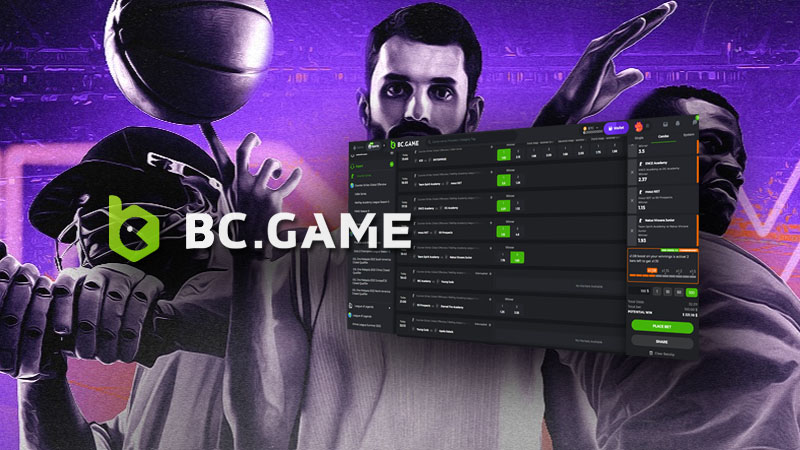Exploring the Landscape of Mobile Gaming in Argentina

Mobile Gaming in Argentina: A Thriving Sector of Digital Entertainment
Argentina is one of the fastest-growing markets for mobile gaming in Latin America. The combination of increasing smartphone penetration, improved internet connectivity, and a young, tech-savvy population has contributed significantly to this growth. From casual games to competitive eSports, the landscape of mobile gaming in Argentina is diverse and exciting. Players are not just consuming content; they are actively participating in a vibrant gaming community. In this context, players are also exploring unique gaming experiences like Mobile Gaming in Argentina app bc.game, which caters to a niche audience interested in crypto gaming. This article delves into the various aspects shaping the mobile gaming ecosystem in Argentina, detailing trends, popular games, and the cultural factors influencing gamers.
The Rising Popularity of Mobile Gaming
The mobile gaming market in Argentina has witnessed exponential growth in recent years. The availability of affordable smartphones and various mobile plans has made gaming accessible to a wider audience. As of 2023, over 70% of Argentinians own a smartphone, and a significant portion of these users engages in mobile gaming. This growth is primarily driven by the younger generation, particularly those between the ages of 18 and 34. According to recent studies, nearly 60% of this demographic identifies as gamers, which emphasizes the relevance of mobile games in their daily lives.
Trends in Mobile Gaming
Several key trends are shaping the mobile gaming market in Argentina. First and foremost, the rise of free-to-play games combined with microtransactions has revolutionized the gaming experience. Many popular titles like PUBG Mobile, Call of Duty Mobile, and Clash of Clans allow players to download the game for free but offer in-game purchases to enhance gameplay. This model has proven incredibly effective, as it lowers the barrier to entry for new players while still generating revenue for game developers.
Another prominent trend is the growing interest in augmented reality (AR) and location-based games. Games like Pokémon GO have captured the imagination of players, driving them to explore outdoor environments and interact with the real world while gaming. This trend has been especially popular in urban areas where players congregate. The concept of combining gaming with physical activity has attracted a diverse range of audiences including those who might not consider themselves traditional gamers.
Popular Mobile Games in Argentina
As the market expands, certain games have emerged as dominant players in Argentina. Among them, Free Fire and League of Legends: Wild Rift have gained immense popularity. Free Fire, a battle royale game designed for mobile devices, allows players to compete against each other in high-paced matches. Its quick gameplay (average match lengths of around 10 minutes) and engaging mechanics make it a favorite among Argentine gamers, especially in rural areas where internet stability can pose a challenge.
League of Legends: Wild Rift, a mobile adaptation of the beloved PC game, has also made a substantial impact. The game’s vibrant community and competitive nature have led to organized tournaments, drawing significant attention and fostering a sense of camaraderie among players. This competitive scene is further supported by local clubs and eSports teams that actively engage with the community, hosting events and tournaments that provide players with opportunities to showcase their skills.
The Role of Social Media and Streaming

Social media platforms play a crucial role in the growth of mobile gaming in Argentina. Players often share their gaming experiences on platforms like Twitch, Facebook Gaming, and YouTube. The ease of access to these platforms encourages community engagement, as players showcase their skills, share tips, and connect with others who share their passion for gaming. Additionally, influencers from the gaming community often collaborate with game developers to promote titles, contributing to the growth of a game’s popularity and its user base.
Challenges Facing Mobile Game Developers
Despite its growth, the mobile gaming sector in Argentina faces several challenges. One significant hurdle is the economic climate, which is marked by inflation and currency devaluation. These economic factors can make purchasing in-game items a burden for players, potentially limiting the revenue that developers can generate from microtransactions. Additionally, many developers aim to localize their games to cater to Argentine culture and preferences, which can be resource-intensive and complex.
Another challenge is the competition from international game developers. As mobile gaming becomes a global phenomenon, local developers must compete with big-name publishers who have larger budgets and established player bases. To differentiate themselves, local developers are often required to innovate continually and create unique gaming experiences that resonate with their audience.
Cultural Influences on Gaming in Argentina
Argentine culture significantly shapes the gaming landscape. Local influences can be seen in the themes and narratives present in many games. Argentine developers are increasingly tapping into local mythology, history, and pop culture to create engaging stories that resonate with players. Games incorporating elements of tango, folklore, and even football (soccer) have become popular, showcasing a blend of gaming and cultural pride.
Moreover, the sense of community is strong in Argentine gaming culture. Many players participate in forums, groups, and social media pages dedicated to specific games or genres. This community engagement enriches the overall gaming experience, as players often share strategies, organize gaming events, and support one another.
The Future of Mobile Gaming in Argentina
Looking ahead, the mobile gaming landscape in Argentina appears promising. As technology continues to evolve, it is likely that emerging trends—such as artificial intelligence and improved graphics—will enhance mobile gaming experiences. Additionally, the growth of 5G technology is expected to facilitate smoother gameplay and deeper immersive experiences for players.
Furthermore, the increasing interest in eSports can lead to more investment in the sector, potentially providing opportunities for local developers and players. Organizations are beginning to recognize the potential for growth within the eSports space, resulting in increased sponsorships and support for local tournaments.
In conclusion, mobile gaming in Argentina is not just a fleeting trend; it represents a burgeoning sector of digital entertainment that reflects the country’s unique culture and challenges. With active participation from players, developers, and the broader community, the future of mobile gaming in Argentina looks not just bright but also excitingly diverse.


























